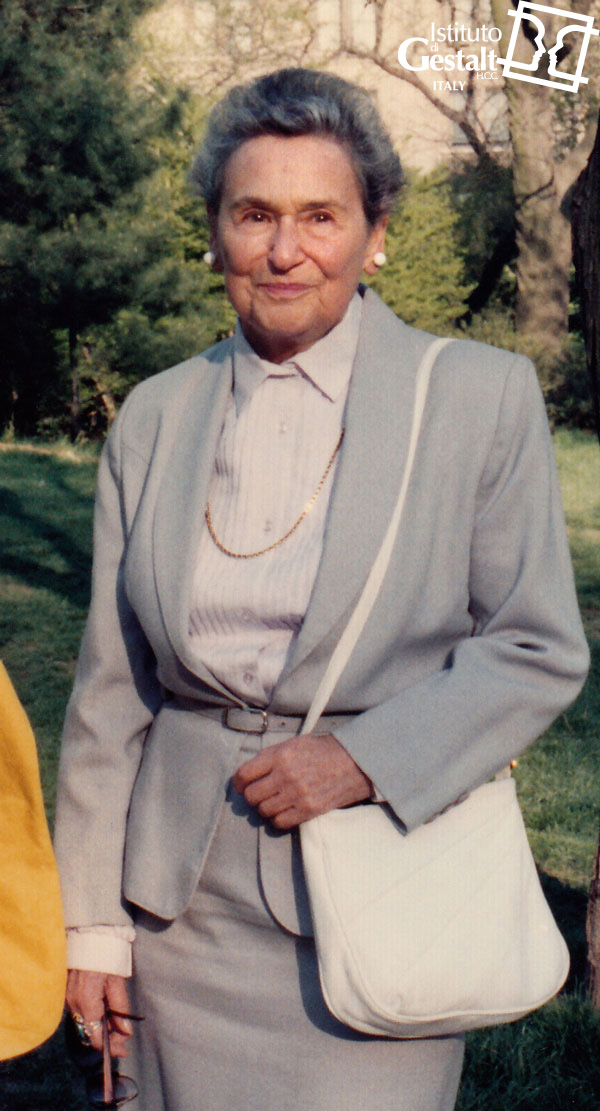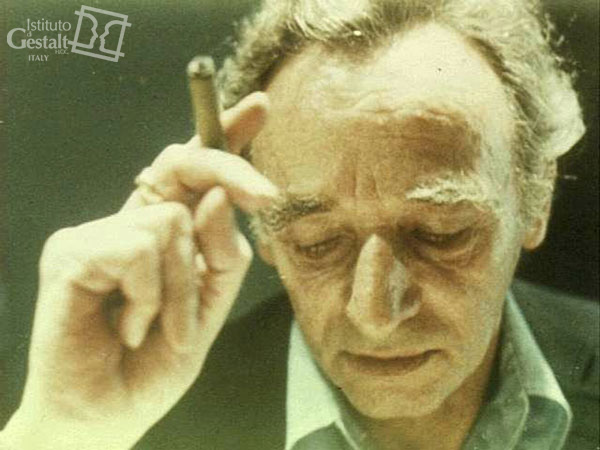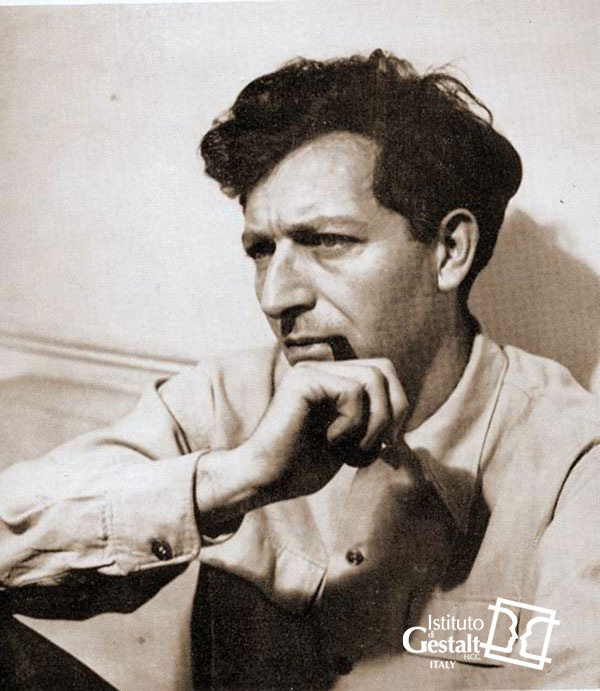Gestalt Therapy is a phenomenological, aesthetic and procedural method. It integrates the bodily, experiential, group and family models in a unique synthesis. Gestalt Therapy was born in the USA in the 1950s, from the intuitions of German psychoanalyst Frederick Perls, his wife Laura Posner, and a group of American intellectuals among whom Paul Goodman and Isadore From.
Every human experience comes about at the contact boundary between a ‘human animal organism’ and his or her environment. It is precisely what happens at this boundary that is open to observation and to a possible therapeutic intervention. In Gestalt Therapy, the healing process does not consist in the rational understanding and subsequent control of the disorder. Rather, it starts with the feeling of being recognized in one’s intentionality of contact towards the other.
This approach brings some novelty into the realm of clinics and of the interaction between person and society – in fact, it introduces aesthetic values, respect for individual creativity and the acknowledgment of the beauty that is inherent in human relationships.
Gestalt Therapy can be applied to individuals, couples, families, groups and organizations.




For English subtitles activate English CC with setting button
Origin of the word Gestalt
Gestalt is a German word meaning “whole structure”, “harmonious configuration”. This term refers to two research streams, born within separate contexts and pursuing separate objectives. The first one is Gestalt psychology, a theoretical school concerned with the study of perception in the 1920s. The second one is Gestalt Therapy, a post-analytical clinical school which developed in the USA in the 1950s, within the field of humanistic psychotherapies. It is not a random fact that these two schools shared the name “Gestalt”, as explained below.
History
Gestalt therapy falls within the category of humanistic psychotherapies. It was Friederich Perls, a German Jewish psychoanalist, whose intuition gave rise to this form of therapy: he had emigrated in the Forties, because of his race, first to South Africa and subsequently to the United States, where his insight was further developed by a group of American intellectuals with a deep knowledge of psychoanalysis. Some outstanding names in the group were Paul Goodman, Laura Polsner (Perls’s wife), Isadore From, Paul Weisz, Lotte Weisz, Elliot Shapiro, Alison Montague and Sylvester Eastman.
The birth of Gestalt therapy was the expression of the creative synthesis of various philosophical and psychological cultural tendencies which, in the post-War period, fully revealed new cultural paradigms. Besides Gestalt psychology, of which Perls had had direct experience when he was working as Goldstein’s assistant, and of course psychoanalysis, other contributions to the formulation of his thinking came from his experiences of individual analysis with Wihelm Reich (Salonia-Spagnuolo Lobb, 1988) and with Karen Horney (Salonia 1990; Cavaleri 1990; 1991), Otto Rank’s theory on the crucial importance of the counter-will for the differentiated and creative growth of the human individual (Rank, 1932; Müller, 1991; Davidove, 1993), then Holism in its theoretical formulation by Jean Smuts (Robine, 1993), Existentialism and Phenomenology, in which Perls was trained by Isadore From (Rosenfeld, 1987), and finally Oriental philosophies, especially Zen.
Friedrich Perls had been Kurt Goldstein’s laboratory assistant in Germany, and was therefore enthusiastically involved in his studies of perception in Gestalt psychology. His dissatisfaction with the Freudian theory of the Ego led him to realize that introjection completes its fundamental evolutionary task much earlier than Freud had theorized.
For Perls, teeth development (the dental phase) is the physiological proof of all this. If the newborn child’s sucking its mother’s milk creates or sustains the human capacity – at a physiological as well as a psychological level – to introject, teeth development must likewise create (or maintain) a physiological or psychological capacity on the part of the child, namely the capacity to deconstruct both food and reality, to attack them in order to be able to assimilate them, if they are nourishing, or reject them if they are harmful or non-nourishing. The ability to chew and bite which teeth development gives to the organism puts absolute emphasis on aggressiveness at a moment of evolution significantly earlier than Freud had theorized. Moreover, Perls saw aggressiveness itself in the positive terms of the survival and physical and existential growth of the organism: the drive to self-fulfillment is thus spontaneously attained.
Goldstein’s positive perspective on the impulse to self-fulfillment had a fundamental influence on Perls’s thinking, which was offered as a way of overcoming the dualism present in Freudian metapsychology between the individual’s impulses and the need for social organization. Indeed, since the individual is the subject who deconstructs and reconstructs, this means that s/he has a real possibility of living fully in her/his own world.
See more…
